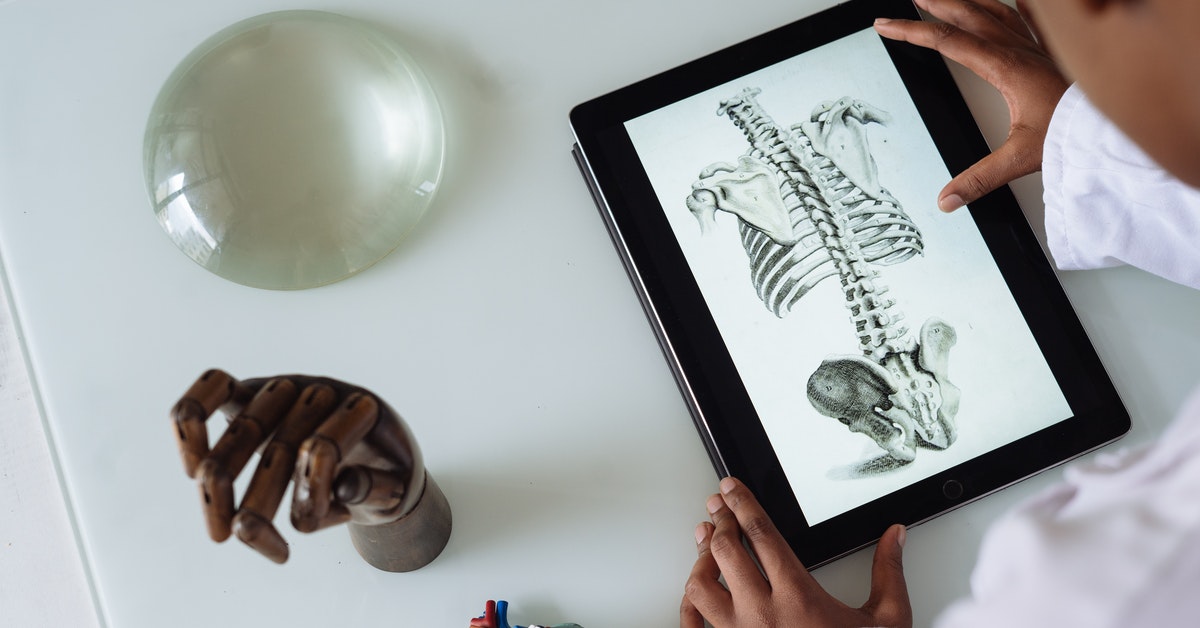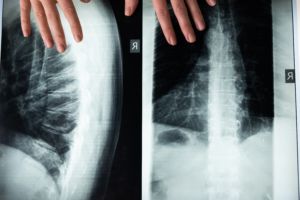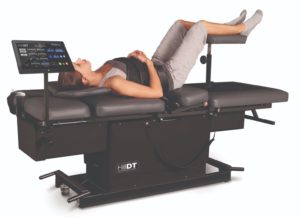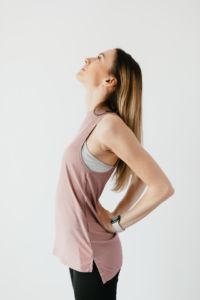Back pain can be chronic and debilitating, but there are treatments that can help you get back to living an active life. One of these treatments is spinal decompression therapy. Here’s your guide to what this treatment is and how it can benefit you.
What Does ‘Spinal Decompression’ Mean?
The spine is made up of bones called vertebrae that have cushy, fluid-filled structures between them called discs. Nerves run from your spinal cord out through openings in the vertebrae to other areas of the body. The vertebrae are connected at joints called sacroiliac joints. Injuries to the back can affect these joints, the discs, or the nerves and soft tissues in the area.
When an injury occurs anywhere in the body, robust blood flow is required to complete the healing process. Sometimes the body struggles to get blood flow to the joints in the spine. Age-related degeneration (compression) of the spine can make matters worse. Degeneration and damaged discs can also put pressure on nerves, causing pain, numbness, or tingling. Sometimes a damaged disc will leak fluid that irritates nearby nerves and tissues.
Spinal decompression refers to the process of gently pulling the vertebrae to create negative pressures within the spinal discs. This relieves the pressure on nerves, sucks leaking fluid and bulging discs back into place, and encourages blood flow between vertebrae and in the sacroiliac joints. The increase in blood flow helps your body bring nutrients, oxygen, and immune cells to the injured area so healing can happen.
Spinal decompression therapy should not be confused with spinal decompression surgery. The latter is an invasive procedure with a less than impressive track record for success. The former is a non-invasive treatment that has been proven to reduce chronic pain.
What Will Happen During My Treatment?
Spinal decompression therapy is sometimes referred to as motorized traction. Traction is a common treatment for musculoskeletal problems that uses slings, pulleys, and manual manipulation to stretch the spine. This type of manual traction has never been proven to create negative pressures within the spine.
Spinal decompression therapy uses a computerized table that can move in precise increments and has been proven to create negative pressures. When you come in for your treatment session, you will lie down on a specially designed table that is divided into two sections. Your provider will secure you to the table using a comfortable harness around your torso and legs. The table is operated using a computer interface that allows treatment to be customized to your body. Once section of the table will move to slowly and gently stretch your spine. Your provider will talk to you throughout this process to ensure your comfort. Once the correct setting for you has been established, you will continue the treatment for around 30 minutes.
Most patients find decompression relaxing and comfortable. Having the pressure taken off sensitive nerves causes immediate pain relief for many. If you have extensive disc trauma, your first few sessions may be slightly uncomfortable. Your provider will always ensure that you are not in significant pain and adjust settings according to your input. Every decompression system comes with a patient safety switch that you can push at any time to stop the treatment.
What Kind of Results Should I Expect?
Spinal decompression is used to treat several different causes of back pain. Your treatment plan and outcome will vary depending on the condition you are treating. Most treatment plans call for more sessions at the start of treatment with gradual tapering. For instance, you may go three times a week for four weeks then cut back gradually. Your chiropractor may adjust your treatment plan as you go along, according to how you respond to treatment.
Studies have shown that 86% of patients with ruptured discs saw excellent results after decompression treatment regimens. 75% of facet syndrome patients had similar results. Most patients experience some relief after their first few sessions and notice continued progress throughout treatment. In many cases, the results of treatment are long-lasting. This is especially true with disc-related injuries. Decompression therapy can lead to complete healing of the disc, preventing chronic issues.
Are There Side Effects?
Spinal decompression therapy has a solid track record of safety. As with any treatment, there are some contraindications. Let your doctor know about any surgeries or health conditions you have had. Pregnant women should not be decompressed.
The only side effect of decompression is mild muscle pain or spasms. Not everyone experiences this, but some people do, especially after their first couple of treatments. This is because your muscles have been moved in a way they aren’t used to, similar to when you start a new workout routine. Your chiropractor can recommend at-home treatments to decrease discomfort. Your muscles should be adapted after your first few visits and will likely not be sore after future treatments.
What if I’ve Had a Failed Back Surgery?
Many patients come to us after failed back surgeries seeking relief from chronic pain. The good news is that some back surgery patients are candidates for spinal decompression therapy. If it’s been at least six months since your surgery and you don’t have any hardware or fusions, you may be a candidate. Talk to your chiropractor about your situation. If you aren’t a candidate for spinal decompression therapy, he may recommend other treatments.
How Do I Know if Spinal Decompression is Right for Me?
The best way to determine the best treatment for you is to talk to your chiropractor. At Allstar Chiropractic, we talk to our patients about their concerns and provide diagnostic tests such as x-rays before recommending treatment. Spinal decompression therapy is effective for various conditions, including disc problems, facet syndrome, sciatica, and stenosis. Depending on your diagnosis, you may benefit from a combination of treatments that includes spinal decompression therapy.
Our spinal decompression therapy providers in Kentucky have seen amazing results with patients suffering from chronic back pain. You don’t have to live with chronic pain. Let our chiropractors set you up with a personalized treatment plan that will get you out of pain and back to enjoying life.








